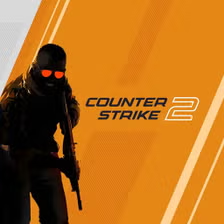The Outer Worlds 2 – A Fresh Frontier of Intergalactic Adventure
Introduction
The Outer Worlds 2, developed by Obsidian Entertainment and published by Private Division, is the highly anticipated sequel to the critically acclaimed 2019 RPG. It continues the franchise's signature blend of player-driven storytelling, dark humor, and decision-based narratives. Expanding upon the original’s success, this sequel promises deeper explorations, richer worlds, and more consequential choices that shape your interplanetary journey.
Set within the Halcyon system’s uncharted sectors, players embark on a new voyage as a customizable explorer whose every decision influences everything—from crew loyalty to planetary politics. With its mix of classic Obsidian dialogue, strategic combat, and satirical edge, The Outer Worlds 2 aims to push the series into bold, cosmic new territory.
1. Development and Vision
Obsidian announced The Outer Worlds 2 in December 2022, signaling a return to the beloved RPG universe after the success of the first game. The development team embraced player feedback, promising improved world-building, deeper companion systems, and more open-ended choices.
Building a Bigger Universe
Obsidian expanded the developer roster and budget, enabling richer planetary environments, advanced faction systems, and enhanced NPC interactions. Core systems—dialogue, combat, player freedom—were refined, elevating the experience without losing what made the original special.
Balancing Satire and Seriousness
The sequel maintains its cheeky tone while introducing more serious thematic undertones: corporate greed, colonization, and identity. Obsidian emphasizes that your moral compass now feels meaningful; choices carry weight not just in narrative, but in political and interpersonal consequences.
2. Story Premise and Setting
In The Outer Worlds 2, you awaken aboard a derelict colony ship drifting through deep space. Your arrival sets off a chain reaction among warring factions vying for control of untouched planets and resources. Whether you act as peacemaker, opportunist, or rebel, your actions will shape a new social and political order in the Halcyon frontier.
Ambitious Themes
Beyond personal stakes, the sequel explores grander themes: the ethics of colonization, corporate exploitation, and the struggle for autonomy across new human frontiers. These ideas are woven into missions, dialogues, and world lore, creating a broader thematic tapestry.
Rich Locational Diversity
Unlike the relatively compact scope of the first game, Outer Worlds 2 spans multiple planetary systems— from lush jungles and underground megacities to abandoned mining outposts and floating arcologies. Environmental storytelling reveals histories, secrets, and faction dynamics with layered detail.
3. Character Creation and Companions
The sequel offers a more robust character-creation system: choose genes, childhood background, and special traits that influence dialogue and perks. The perk system has been refined to provide meaningful decisions throughout the game.
Companions return with deeper arcs and stronger influence on your journey. Each has loyalty missions that shape their worldview and can even determine their long-term presence in your crew. Trust-building adds complexity to combat coordination and narrative flow.
4. Gameplay and Combat Mechanics
Combat in Outer Worlds 2 blends real-time shooting with tactical slowdown, improved enemy AI, and refined cover mechanics. Weapon customization has expanded—now allowing unique mods, element types, and special firing mechanics.
Exploration is more dynamic thanks to new tools like jetpacks, terrain scanners, and customizable mounts. Verticality and traversal are important in larger environments, especially during mission infiltration or large-scale battles.
5. Choices, Consequences and Narrative Branching
Obsidian has doubled down on meaningful choice design. Major story arcs can split entire regions or companion allegiances, and these ripple through missions, ending scenarios, and character reactions. Your alignment now unlocks or locks storylines organically.
Side quests also evolve based on your decisions in unrelated missions. Reputation systems allow or restrict entry to towns, affect pricing with vendors, and change how random encounters unfold in the world.
6. World Structure and Side Content
The game structure connects open-world hubs with handcrafted story arcs. Each planet serves as a contained sandbox with its own conflicts, side activities, and regional factions.
Optional content includes combat arenas, hidden vaults, ancient ruins, and interstellar radio stations. Curiosity is rewarded with secret lore entries, rare gear, and reputation boosts with hidden factions.
7. Visuals, Audio and Technical Performance
Outer Worlds 2 significantly improves on visuals with high-definition textures, dynamic weather systems, and complex lighting. Environments are much more lively—citizens have routines, creatures roam naturally, and vehicles move between zones.
Voice acting, ambient sound, and soundtrack direction are all immersive. Each area has a distinct musical tone, and companion conversations happen organically during travel and combat, adding flavor to each expedition.
8. User Interface and Accessibility
The UI has been revamped for clarity and control. Perk trees are easier to navigate, quest markers can be toggled with granularity, and inventory has multiple sort options. The journal interface now separates main, faction, and companion quests cleanly.
Accessibility features include remappable keys, subtitles with multiple sizes and backgrounds, colorblind modes, motion blur toggles, and controller haptics calibration. The game invites both hardcore and casual players to feel equally supported.
9. Community Engagement and Post-Launch Support
Obsidian involved the community early with dev blogs, closed playtests, and feedback-driven updates. This participatory development refined faction balance, loot economy, and enemy behavior pre-launch.
The post-launch roadmap includes narrative DLC, quality-of-life patches, and live-event content. The developers have promised free expansions tied to faction epilogues and long-term support that reflects how players guide the in-game universe.
10. Pros and Cons
Pros
-
Vast, beautiful planetary settings with deeper lore
-
Consequential narrative with branching paths and moral weight
-
Smartly redesigned combat and exploration tools
-
Meaningful character and companion systems
-
High-quality voice acting and soundtrack
-
Expansive accessibility and UI improvements
Cons
-
Faction outcomes may feel rushed if decisions aren't balanced
-
Some technical hitches during massive battles
-
Companion side missions can be hard to trigger without guides
-
DLC plans may fragment the full experience for some players
Ratings Breakdown
-
Narrative & Writing: 9 / 10
-
Exploration & World Design: 9.5 / 10
-
Combat & Customization: 8.5 / 10
-
Visuals & Audio: 8.5 / 10
-
Companions & Characters: 9 / 10
-
Replayability & Systems: 8.5 / 10
Overall Score: 8.8 / 10
Conclusion
The Outer Worlds 2 is more than a sequel—it’s a reinvention that keeps Obsidian’s signature narrative strength while evolving gameplay and design in bold, meaningful ways. With compelling choices, layered characters, and deeply immersive environments, it firmly positions itself as one of the most exciting sci-fi RPGs of the decade.
Fans of the first game will find everything they loved enhanced. Newcomers can jump in without feeling lost, thanks to a fresh story arc. If you’re ready to influence the fate of galaxies with wit, weapons, and wisdom—The Outer Worlds 2 deserves your attention.

































